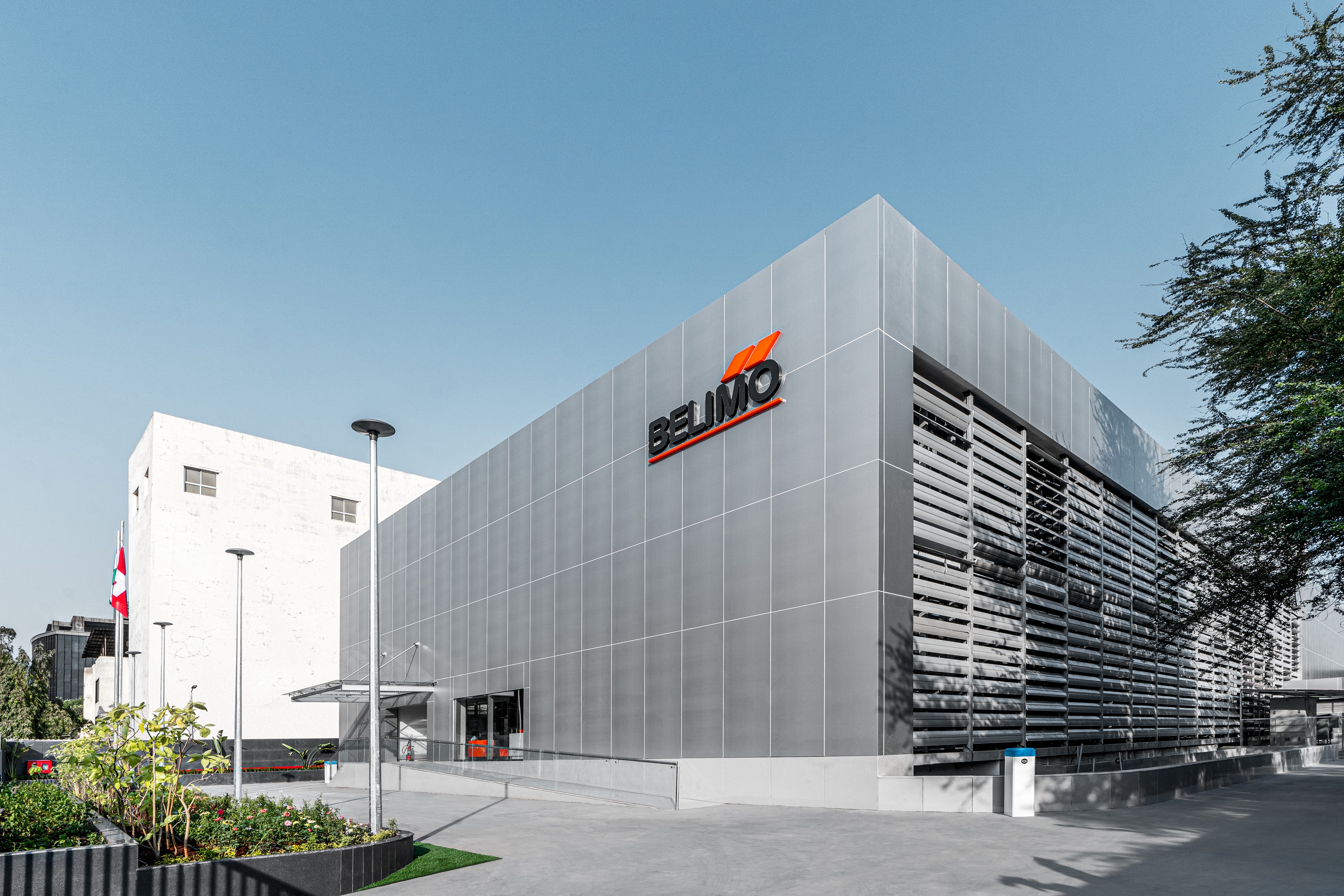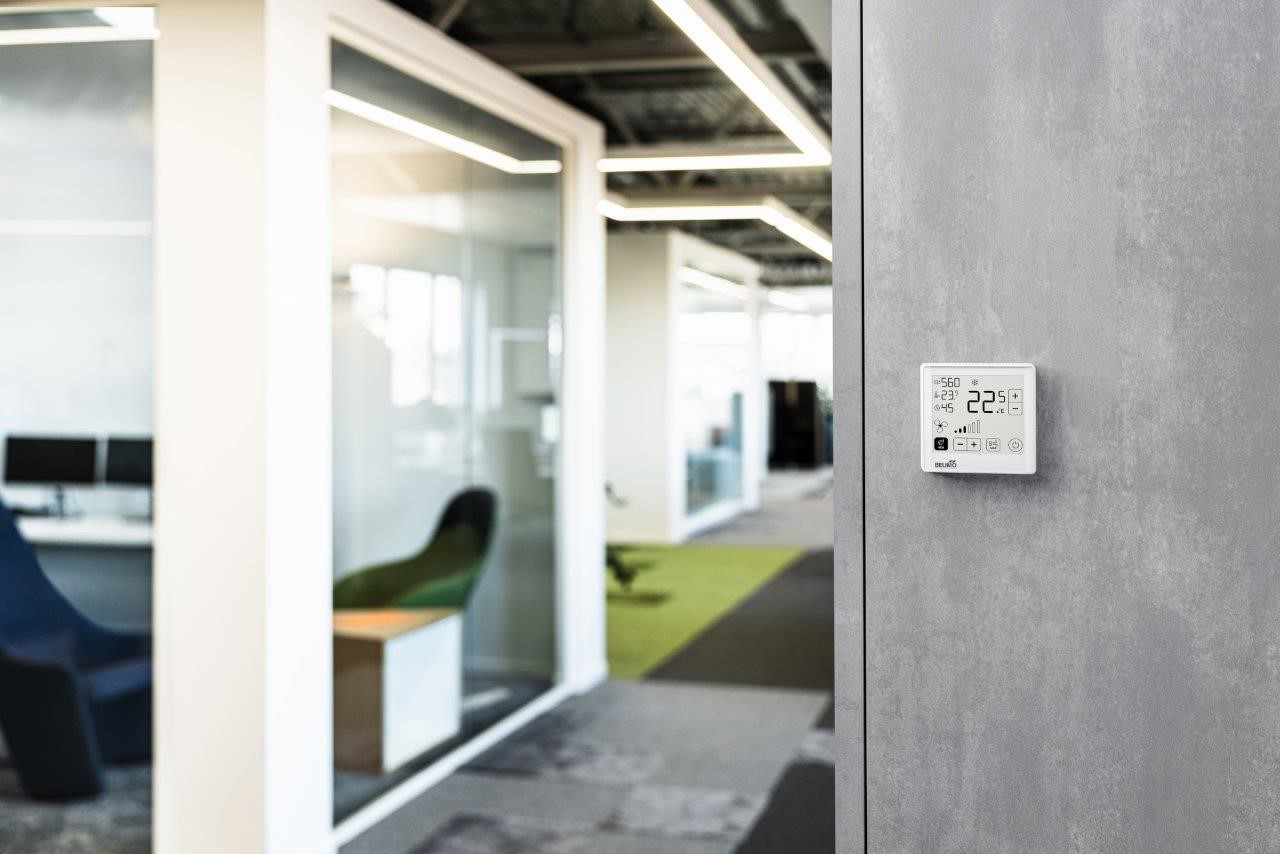Performance
Growth Strategy and Innovation / Balanced Investment Portfolio
The Group’s long-term growth strategy consists of six initiatives geared to increase customer value and advance solution leadership.
Customer Value
RetroFIT+
Only 2% of the world’s buildings are newly constructed each year. This means that concentrating on existing buildings represents the most significant opportunity for reducing greenhouse gas emissions. The renovation rate must, however, be doubled if the ambitious climate targets stipulated by such initiatives as the European Green Deal are to be achieved. Upgrading existing buildings does nonetheless require highly experienced engineers and technicians, thus limiting overall output capacity. Consequently, this initiative intends to eliminate customer bottlenecks by analyzing overall processes and making them more efficient. Belimo has therefore expanded its sales organization with dedicated product managers and RetroFIT+ Application Specialists who are supporting the various customer personas from the initial project assessment to the successful completion.
The RetroFIT+ initiative concentrates on increasing the renovation rate of existing buildings by resolving the most significant bottlenecks in the overall upgrading process through training, tools, and products. The Design-to-Order offering for factory-fitted, unique retrofit assemblies is reducing on-site labor time. The initiative offers the opportunity to expand the existing retrofit business by leveraging synergies among the business lines damper actuators, control valves, sensors, and meters for an increased impact on comfort, energy efficiency, and safety.
Grow Asia Pacific
This initiative is ensuring the Group’s market leadership in the most rapidly expanding market. Most decisive for the success of Belimo in Asia is its concentration on China and India as the world’s two most populous nations. In China, a city cluster hub strategy was implemented in 2017 and has since led to significant gains in market share. In 2022, Belimo increased its market presence in China by opening two additional sales offices in Chongqing and Suzhou, bringing the total number of hub offices to 13.
In India, the main pillars of the strategy are the focus on specific vertical markets such as data centers, pharma, and healthcare by building up the sales network for advising consulting engineers and end users. In addition, local presence with hub offices is expanding, especially in high-growth regions. Also in 2022, Belimo celebrated the opening of its new India headquarters to strengthen the Company‘s footprint and brand awareness on the subcontinent. The CESIM® House hosts logistics, customization, technical support, and an experience center to train customers in innovative building automation solutions (find out more here).
Digital Customer Experience
The “digital customer experience” initiative is directed at enlisting a digitally adept generation of technicians and engineers as digital tools and interactions are gaining ground in the HVAC industry.
During the period under review, the Company’s focus has been on enhancing its global website and promoting efficient sizing, selection, and specification software tools. The Belimo RetroFIT Tool was launched during the year under review. It allows customers to search for a fitting replacement for a field device easily. Similarly, the Belimo RetroFIT App has been launched, enabling Belimo customers to find RetroFIT products quickly. Finding a suitable replacement – including CAD/BIM datasets – allows them to transform poorly functioning equipment into high-performing systems efficiently. Moreover, a new customer relationship management solution featuring improved lead management and performance measurement has been rolled out in the year under review (find out more here).
Solution Leadership
Damper Actuators and Control Valves
The largest sales contribution in the growth plan for the period leading up to 2030 is expected to come from damper actuators and control valves. That is emphasized with a dedicated initiative for growing the business and expanding market leadership by leveraging the economies of scale that result from having the highest volume of shares in the market. Over the next few years, Belimo will be making extraordinary investments in the fundamental renewal of the core platforms for both damper actuators and control valves, while at the same time fully integrating its sensors and meters product range. This will allow for a seamless design, installation, and commissioning experience across the product range offering, as the field devices will become more integrated and require consistent interfaces in the evolving building automation architecture.
In 2022, Belimo completed the rollout of the smallest HVAC damper actuator in the market (UM/UH), with sales developing as anticipated. For the range of UL-rated fire and smoke damper actuators, the newly introduced FSKN BACnet life safety remote inspection module seamlessly connects to fire alarm panels or the building automation system – thus, allowing for remote testing of actuated life safety dampers without costly visual inspections. In the business line control valves, Belimo Energy Valves™ look back at remarkable sales growth once again. One example of a Belimo Energy Valves™ installation is the NEST unit “HiLo” of the Swiss Federal Laboratories for Materials Science and Technology in Dübendorf (Switzerland). It features a low energy consumption HVAC system thanks to interconnected Belimo Energy Valves™ and numerous other Belimo field devices. They reliably measure, control, optimize, and bill the building's heating and cooling energy consumption.
Furthermore, the Company launched a new range of Electronic Pressure-Independent Valves (EPIV) toward the end of the reporting period. Additionally, the zone valve product range ZoneTight™, is now available with press fitting connections for faster installation. Moreover, a selection of control valves for potable water provides zero leakage and prevents energy loss, ensuring customer safety – ideal for drinking water distribution systems.
Sensors and Meters
Under its dedicated sensors and meters initiative, Belimo has continued to expand the range of comfort, energy, and safety sensors. The financial year 2022 saw great success in sensors and meters, growing almost 40% in local currencies, significantly increasing market share. Launching the new product line of room sensors and operating units in late summer was undoubtedly a highlight, winning the prestigious 2023 AHR Expo Innovation Award in the Indoor Air Quality category. One excellent application example is Collège Laval (Quebec, Canada), which improved air quality and visibility for a healthier and more productive environment for its 2‘000 students by retrofitting the campus with 115 Belimo room sensors. The indoor air quality undertaking is part of a program launched by the local government to systematically measure and control the levels of CO2, relative humidity, and temperature in school buildings.
Equally successful was the launch of the thermal energy meters with Measuring Instruments Directive (MID) approval, now available worldwide. Gas detection sensors introduced into the US market after achieving UL 2075 approval for its carbon monoxide (CO) sensors earlier in the year ramped up successfully in 2022. These versatile self-contained single- or dual-sensor gas monitors are used for automated ventilation control and alarming systems for recommended building technology applications such as vehicle emissions and industrial health and safety.
Digital Ecosystem
In the coming years, most Building Automation and Controls Systems (BACS) will evolve into cloud-based and Building IoT (BIoT) systems. In light of these trends and the increasing interest of building operators in energy data and predictive maintenance, the digital connectivity of Belimo devices will be of increasing importance. A well-designed digital ecosystem will allow for seamless integration, providing easy access to data from damper actuators, control valves, sensors, and meters. Being already recognized as the leader in this domain, leveraging platform capabilities, edge logic, and allowing seamless access to device data can become a strong point of differentiation and a source of additional growth for Belimo.
In 2022, the Digital Ecosystem Collaborators have continued to grow, with already 23 Digital Ecosystem Collaborators (find out more here). More than 100 additional digitally savvy companies are interested in joining the Belimo Digital Ecosystem, with innovative companies such as Loxone, which provides intelligent building automation solutions.
Why Is Balanced Investment Portfolio Important?
Managing the portfolio in the interest of the Company’s long-term success involves striking the right balance between investments in both existing and new portfolios. In its existing business, Belimo focuses on maintaining a broad, competitive, and differentiated product range, and renewing selected sub-ranges at the end of their lifecycle. In its new business areas, Belimo aims to generate growth by developing unique and innovative products for existing customer groups. This will be, for example, through new sales approaches, extra marketing measures, or training.
How Is Balanced Investment Portfolio Managed?
A comprehensive annual strategy ensures that Belimo will strike this desired balance. The Markets and Innovation Committee, a formal team that comprises of senior Belimo executives from the three sales regions, Product Management, Group Innovation and Group Strategy, assesses and prioritizes projects to be released for development.
An implementation strategy, quarterly progress reviews, and the assignment of an executive business owner and a strategy coach to each of the six growth initiatives together ensure that decisions are transparent and well-grounded.
How Is Balanced Investment Portfolio Measured?
The key performance indicators of the different initiatives are tracked and discussed each quarter by the Executive Committee and the individual initiative manager. These generally include indicators for the:
- Dedicated headcounts.
- Sales growth per strategic growth initiative.
A key performance indicator per initiative is, for example:
- The number of collaborations in the Belimo Digital Ecosystem (Digital Ecosystem, see Digitally Enabled Solutions).
The following are examples of important operative figures that enable balanced allocations between investments in the different areas of the Company:
- Percentage of sales spent on research and development.
- Percentage of sales spent on marketing.
- Percentage of sales spent on training.
- Incremental sales of new products in their fifth year since market launch divided by net sales.


